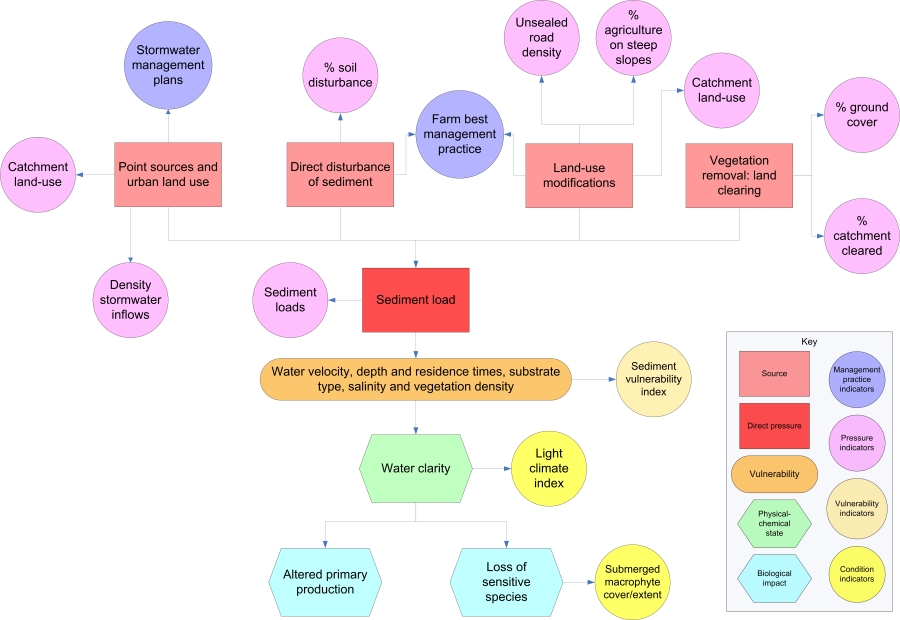Aquatic sediments – Management response
Aquatic sediments – Management response
Flow chart showing the major elements associated with aquatic sediment management
Click on elements of the flow chart or select from the tabs below
Management practices to reduce sediment entering a wetland:
Adequate buffer zones
Application of artificial and natural means for preventing erosion
Appropriate cropping (e.g. cover crops, trash blanketing, controlled traffic, filter strips) practices
Appropriate environmental flow releases
Appropriate stock grazing regimes for land type
Avoidance of structural disturbance of the wetland
Boat speed limits
Conservation tillage methods
Construction (to best practice standard) of contours, detention reservoirs, sedimentation ponds or settling basins
Farm management systems (soils)
Fire management plans
Minimal disturbance of the foreshore/bank
Point source licensing and enforcement
Presence of conservation buffers
Proper repair and maintenance of drainage ditches and levees
Reduction of sediment excesses arising from construction activities
Revegetation (wetland/fringing zone/catchment, reduce bare ground)
Sealing roads/curbing
Use of land and water management best (or recommended) practices on the watershed
Wind breaks
Last updated: 22 March 2013
This page should be cited as:
Department of Environment, Science and Innovation, Queensland (2013) Aquatic sediments – Management response, WetlandInfo website, accessed 8 May 2025 . Available at: https://wetlandinfo.des.qld.gov.au/wetlands/management/pressures/lacustrine-palustrine-threats/aquatic-sediments/management.html

 — Department of the Environment, Tourism, Science and Innovation
— Department of the Environment, Tourism, Science and Innovation


